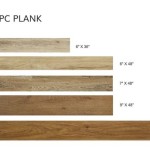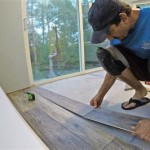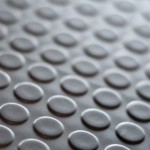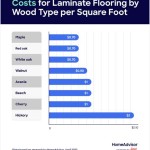Engineered vs. Solid Wood Flooring: A Comprehensive Comparison
Wood flooring has long been a preferred choice for homeowners seeking to add warmth, elegance, and durability to their living spaces. Two popular options dominate the market: engineered wood flooring and solid wood flooring. While both offer the aesthetic appeal of natural wood, they differ significantly in their construction, performance, and application. Understanding these distinctions is crucial for making an informed decision that aligns with specific needs and budget considerations.
This article provides a detailed comparison of engineered and solid wood flooring, examining their composition, installation methods, performance characteristics, maintenance requirements, and cost factors. By exploring these aspects, homeowners can gain a clearer understanding of which option best suits their individual circumstances.
Construction and Composition
The fundamental difference between engineered and solid wood flooring lies in their construction. Solid wood flooring, as the name suggests, is made from a single piece of hardwood. This means that each plank is cut directly from a tree, typically oak, maple, walnut, or cherry. The thickness of solid wood planks can vary, but it is commonly found in thicknesses ranging from ¾ inch to 5/16 inch. This uniform composition gives solid wood its characteristic stability and longevity.
Engineered wood flooring, on the other hand, is constructed from multiple layers. The top layer, known as the veneer or wear layer, is a thin slice of real hardwood. This veneer is adhered to a core made of multiple layers of plywood, MDF (Medium Density Fiberboard), or HDF (High Density Fiberboard). These layers are typically bonded together using adhesives under heat and pressure. The cross-directional construction of the core provides enhanced dimensional stability compared to solid wood, making it less susceptible to warping or expansion and contraction due to changes in humidity.
The thickness of the veneer layer in engineered wood flooring is a critical factor in determining its quality and longevity. Thicker veneers allow for more refinishing opportunities, extending the lifespan of the floor. Lower-end engineered wood flooring may have very thin veneers, limiting the number of times it can be sanded and refinished. Higher-quality engineered wood flooring features thicker veneers, offering similar refinishing potential to solid wood.
Installation Methods
Installation methods for engineered and solid wood flooring also differ significantly, primarily due to their construction. Solid wood flooring is typically installed using nails, staples, or glue. Because solid wood expands and contracts with changes in humidity, it is generally recommended to install it above grade, meaning on or above the ground level. This helps minimize exposure to moisture, which can lead to warping and cupping.
Engineered wood flooring offers more versatile installation options. In addition to nailing, stapling, and gluing, it can also be installed as a floating floor. A floating floor is not directly attached to the subfloor; instead, the planks are connected to each other using a tongue-and-groove locking system. This installation method is faster and easier than traditional methods, and it allows for installation over a variety of subfloors, including concrete. The dimensional stability of engineered wood flooring also makes it suitable for installation below grade, such as in basements, where moisture levels are typically higher.
The subfloor preparation requirements for both types of flooring are similar. The subfloor must be clean, level, and dry. Any imperfections in the subfloor can telegraph through the flooring, so it is essential to address them before installation. In the case of floating engineered wood floors, an underlayment is typically installed between the subfloor and the flooring to provide cushioning and sound insulation.
Performance Characteristics
The performance characteristics of engineered and solid wood flooring are influenced by their construction and installation methods. Solid wood flooring is known for its durability and longevity. With proper care and maintenance, it can last for decades, even centuries. Its solid construction allows for multiple refinishing cycles, restoring its original beauty and extending its lifespan. However, solid wood flooring is more susceptible to moisture damage and can expand and contract significantly with changes in humidity. This can lead to gaps between planks, warping, and cupping.
Engineered wood flooring offers several performance advantages over solid wood. Its layered construction provides superior dimensional stability, making it less prone to expansion and contraction. This makes it a suitable choice for areas with fluctuating humidity levels, such as kitchens and bathrooms. Engineered wood flooring is also more resistant to moisture damage than solid wood, although it is still not completely waterproof. Its ability to be installed as a floating floor allows for installation over a variety of subfloors, including concrete, making it a versatile option for different types of homes.
The wear layer of engineered wood flooring is a critical factor in its performance. Thicker wear layers provide greater resistance to scratches and dents and allow for more refinishing opportunities. Lower-quality engineered wood flooring with thin wear layers may be more susceptible to damage and may not be able to be refinished. Therefore, it is essential to choose engineered wood flooring with a sufficiently thick wear layer to ensure its durability and longevity.
Maintenance Requirements
The maintenance requirements for both engineered and solid wood flooring are relatively similar. Regular sweeping or vacuuming is essential to remove dirt and debris that can scratch the surface. Damp mopping with a pH-neutral wood floor cleaner is recommended to remove spills and stains. Avoid using excessive water, as this can damage the flooring. It is also important to protect the flooring from scratches and dents by using furniture pads under the legs of chairs and tables and by avoiding wearing shoes with sharp heels.
The type of finish applied to the wood flooring also affects its maintenance requirements. Surface finishes, such as polyurethane, provide a durable protective layer that is resistant to scratches and stains. Penetrating oil finishes, on the other hand, soak into the wood and provide a more natural look and feel. Penetrating oil finishes require more frequent maintenance, such as periodic re-oiling, to maintain their protective properties.
Refinishing is an important part of maintaining both engineered and solid wood flooring. Refinishing involves sanding down the existing finish and applying a new coat of finish. This can remove scratches, dents, and other imperfections, restoring the flooring to its original beauty. Solid wood flooring can typically be refinished multiple times, while engineered wood flooring can be refinished depending on the thickness of the wear layer. Once the wear layer is sanded down to the core, the flooring can no longer be refinished.
Cost Factors
The cost of engineered and solid wood flooring varies depending on a number of factors, including the type of wood, the thickness of the planks, the finish, and the installation method. Generally, solid wood flooring is more expensive than engineered wood flooring. This is due to the fact that solid wood requires more raw material and is more labor-intensive to manufacture.
However, the cost difference between engineered and solid wood flooring is narrowing as engineered wood flooring technology advances. High-quality engineered wood flooring with thick wear layers can be comparable in price to lower-end solid wood flooring. The installation cost of engineered wood flooring can also be lower than that of solid wood flooring, especially if it is installed as a floating floor.
In addition to the initial cost of the flooring and installation, it is also important to consider the long-term costs of maintenance and refinishing. Solid wood flooring may require more frequent refinishing due to its susceptibility to scratches and dents. However, it can also be refinished more times than engineered wood flooring with thin wear layers. Engineered wood flooring with thick wear layers can offer a good balance of durability and refinishing potential.

Engineered Wood Vs Solid Which Is Better Flooring

Solid Hardwood Vs Engineered Flooring Carpet One Floor Home

Engineered Wood Vs Solid Hardwood

Engineered Vs Solid Wood Flooring The Good Guys

Engineered Wood Flooring Vs Solid Hardwood

Hardwood Vs Engineered Wood Flooring Which Is Best For You Forbes Home

Solid Vs Engineered Hardwood Which Is Better

The Ultimate Guide To Engineered Hardwood Flooring Precision

Should I Choose Engineered Or Solid Hardwood Flooring Ambience

Solid Vs Engineered Hardwood Flooring Olde Wood Ltd
Related Posts








